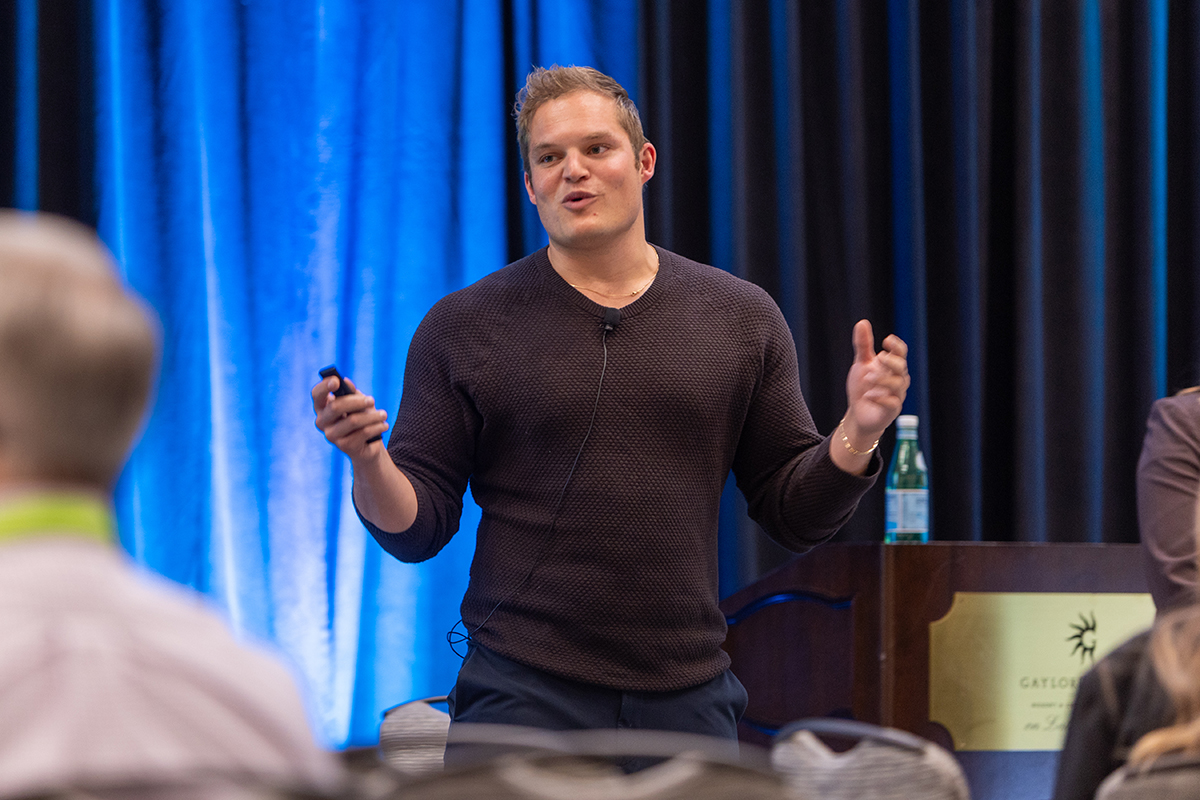
At the E-Scrap Conference, e-Stewards and Bloom ESG urged ITAD companies to start ESG reporting now, track carbon metrics and use new tools to show avoided emissions. | Big Wave Productions
In a workshop at this year’s E-Scrap Conference in Grapevine, Texas, e-Stewards and Bloom ESG walked IT asset disposition operators through the basics of ESG reporting, greenhouse gas accounting and avoided emissions, then showed how a pair of software tools can turn that data into customer-ready narratives.
Daniel Puckett, director of business development at e-Stewards, opened the session by telling attendees that customers, investors and regulators are already asking for carbon and sustainability information and that the level of scrutiny will only increase.
Jessica Giero, a project lead at Bloom ESG, opened with a plain-language breakdown of what ESG covers and how it differs from day-to-day sustainability work. She said sustainability is the work companies do in their operations while ESG is the set of metrics and key performance indicators that describe that work to outsiders.
“The key issue I like to raise is that ESG is more about the metrics, whereas sustainability is more about the operations,” she said, adding that an ESG report is usually a public-facing document that bundles those metrics into a narrative about the business.
Giero urged companies to start with greenhouse gas accounting even if they believe their footprint is small. She told the room that carbon metrics are “the thing that comes up first and foremost” across industries and that operators will need numbers to back up any claims.
“Already, if you can walk away from anything in this session, it is that you should track your carbon emissions, even if you think they are not big,” she said. “You need to prove they are not big. Someone will ask you. You want to show them that you know the answer.”
She walked through the standard scope one, two and three categories, describing direct fuel use and on-site combustion as relatively straightforward to measure; purchased electricity as the core of scope two; and everything else in the value chain as the more complicated scope three. She said companies should start assembling scope three estimates with whatever data is available rather than wait for complete information.
“You just have to start somewhere,” Giero said. “It is not about getting it perfect. It is just about understanding what are your biggest sources of emissions in your company.”
From there she introduced what Bloom and e-Stewards describe as “scope four” avoided emissions, a term that does not appear in the Greenhouse Gas Protocol but is gaining currency in reuse and recycling circles. The idea is to quantify the emissions that are avoided when a refurbished device displaces the need for a new one or when recovered commodities substitute for virgin materials.
“If we can refurb that laptop to be usable again, give it back to Daniel, and he avoids his purchasing of a brand new laptop, those are avoided emissions,” Giero said. The Bloom platform, she explained, lets users calculate those avoided emissions by asset, commodity, order or customer, then generate customer-specific reports and, in some cases, ISO-audited carbon inset credits.
Audience questions focused on data gaps, especially when material moves to downstream partners. Giero acknowledged that downstream processing information is often scarce and said Bloom relies on the best available public data on processes such as smelting, combined with facility-level energy use that is allocated across processing steps and tested in audit.
Picking up the “crawl, walk, run” theme, Puckett used the second half of the session to preview an e-Stewards reporting tool designed to help operators assemble ESG reports in five broad steps. The process begins with identifying material topics, moves through choosing reporting frameworks and collecting input across departments, then ends with validation and report generation.
Puckett said the tool aims to simplify work that can feel overwhelming, especially for staff who are told to build an ESG report on top of existing responsibilities. “It takes serious project management,” he said, noting that success usually depends on assigning clear internal owners and securing an executive sponsor.
He also stressed that the commercial stakes are real; Puckett said he has seen ITAD firms win deals because they can produce credible sustainability data and that the bar is rising as large corporate customers answer to their own boards and stakeholders.
“Even though it seems daunting at the moment, this is probably the easiest it is going to be and expectations are only going to continue to rise,” he told attendees. If companies wait until an important customer demands a sophisticated report, he warned, “you are not going to be able to just all of a sudden be able to match that.”
More stories about Certification standards